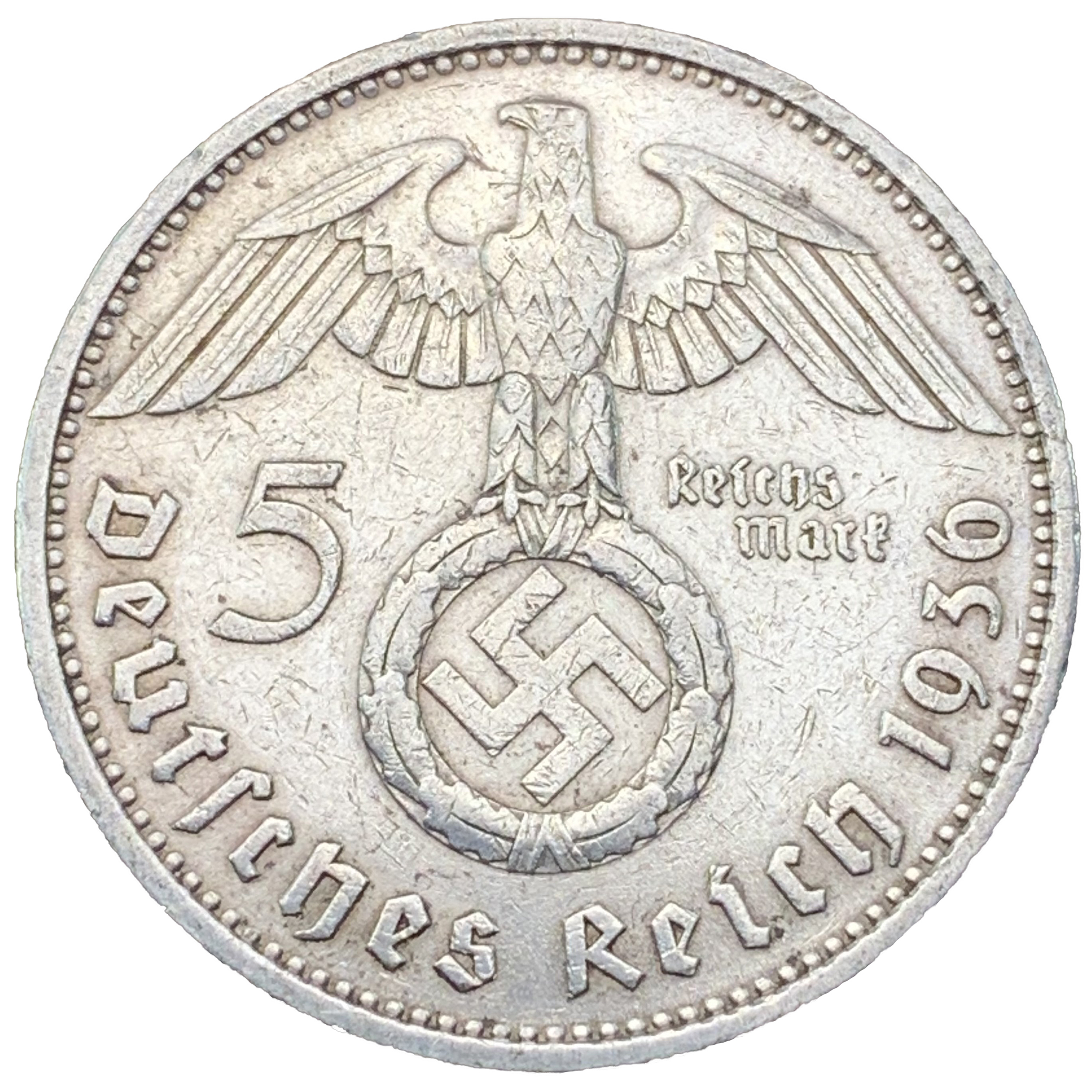Want to learn about 5 Reichsmark silver coins minted in Germany from 1936-1939? This post is a must-read. We have a wide range of rare coins for your eclectic taste.
It’s not just coins; it’s the legacy and story that comes with it. Every coin collector is an enthusiast of the history that comes with each silver coin.
German coins are an embankment of grave or otherwise known as monumental history. Each coin comes from an era that shaped the world we live in today.
These coins are a treasure for any coin collector. Unfortunately, it is becoming more and more difficult to find 5 Reichsmark Silver coins.
5 Reichsmark, Paul von Hindenburg, Swastika Coins
The coin was issued between 1936-1939 until production was halted due to an inadequate supply of silver.
It weighs 13.88 with 90% fine silver. The coin was minted in Germany during the Third Reich Era, hence the Swastika.
As can be seen, the 29mm diameter coin has an eagle, and underneath has a wreath. Inside the wreath, we can see the famous (or infamous) Swastika symbol.
When you reverse the coin, you will find the bust of Paul von Hindenburg looking towards the right. Underneath the head, you can find the inscription, Paul von Hindenburg.
He was a celebrated war hero, military commander, and the second President of the German Weimar Republic (1925-1934). Paul von Hindenburg served during the Austro-Prussian and Franco-German Wars and was brought out of retirement to command the German Eighth Army in East Prussia at the outbreak of World War 1. He died in 1934 from lung cancer.
Uniquely, the coin’s edge is smooth and inscribed with GEMEINNUTZ GEHT VOR EIGENNNUTZ, which translates to “Common Good Takes Priority over Self-Interest.”
To date, the coin holds value to collectors for its history and the events that unfolded in that era.
Rise and Fall of the Swastika
Once an emblem of good tidings, the Swastika now denotes nothing but intimidation and hatred. The word swastika comes from Sanskrit and is derived from Svastika, which means well-being and good fortune.
During the early nineteenth century, archaeologists were interested in an ancient civilization discovered in Eastern Greece. In the excavation, German architect Heinrich Schliemann came across the sign on some German pottery.
Since it was an ancestral German sign, it started surfacing as a symbol of auspiciousness and good tidings across Europe.
Around 1920, the Nazi party emerged from the dark realms of Deutschland. The party adopted the Hakenkreuz (the hooked cross) as their symbol.
Soon, the sign was seen on red flags, hanging from significant buildings and taking the country by storm.
After the fall of Adolf Hitler’s regime, the symbol was highly frowned upon. Due to the stigma associated, people stopped using the symbol.
Nowadays, the connotation of the symbol is taken in one context only; racism and Nazi ideology. Hence, without treading into muddled water, the symbol is no longer used in its original context.
5 Reichsmark Potsdam Church Silver Coin
The coin was commissioned to be released in 1934 to mark the 200th anniversary of Potsdam Garrison Church by the government before Adolf Hitler assumed power.
On one side of the coin there is an eagle with the addition of multiple swastikas. When you reverse the coin, one can see the Potsdam Garrison Church in all of its glory. The coin weighs 13.8 grams with 90% fine silver.
The coin’s edge is inscribed with GEMEINNUTZ GEHT VOR EIGENNNUTZ, which translates to “Common Good Takes Priority over Self-Interest.”
The Ill-fate of Potsdam Garrison Church
It was a beautiful structure built during the reign of Prussian King Friedrich Wilhelm I in 1730. The building was depicted on the coin to celebrate the 200th anniversary of the church and set for release in 1934. The church was built southwest of Berlin. It was an elegant structure, patronized by many German kings and generals.
A later variation of the coin was used to commemorate Potsdam Day, March 21, 1933. Potsdam day was marked when Adolf Hitler took control over Germany, increasing the symbolism of the coin with its history. The people witnessed this day as a power transfer after seeing General Paul von Hindenburg shake hands in affirmation with Adolf Hitler. The church was set ablaze during the allied bombings in 1945 and was finally completely demolished in 1968.
Later, to bring the legacy of the building full circle, the Allied leaders met in Potsdam city from July 17 to August 2, 1945. The leaders gathered here to decide the fate of Germany and bring the end to World War II in Europe.
Conclusion
The rich history and symbolism of Germany and World War II are evident in these coins. Even today, enthusiasts and coin collectors find these coins as treasures brimming with history and legacy.




